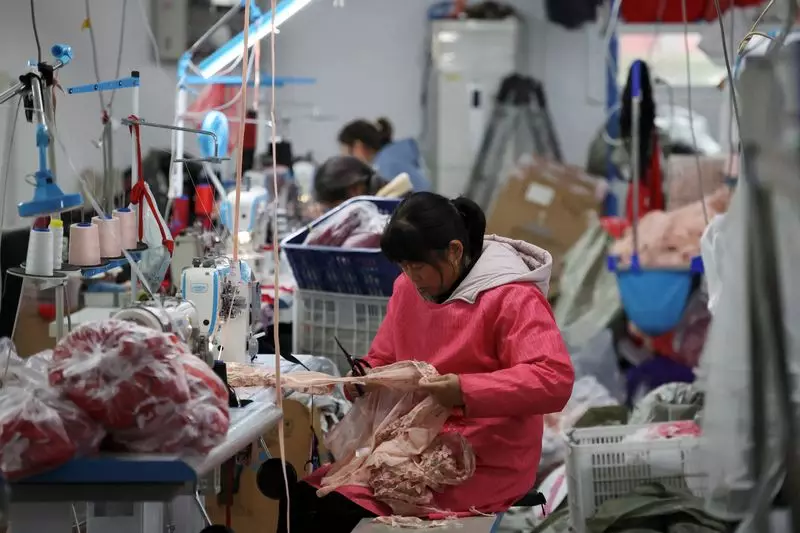In a concerning trend, China’s industrial profits have experienced a decline for the third consecutive year, as highlighted by the latest data from the National Bureau of Statistics (NBS). The statistics reveal that earnings in the industrial sector fell by 3.3% in 2024, following a decline of 4.7% during the January to November period of the same year. This paints a troubling picture for an economy grappling with persistent challenges, including declining domestic demand and a tumultuous property market.
The modest uptick in profits during December, registering an 11% increase compared to the previous year, may provide a glimmer of hope; however, this followed a significant 7.3% drop in November. Such fluctuations underscore the volatility that industrial firms are facing amidst a broader economic context that remains fraught with uncertainty.
Despite these challenges, China’s GDP achieved a growth rate of 5% last year, successfully meeting the government’s official target. A slew of government stimulus measures was implemented to bolster economic performance, indicating a proactive approach by policymakers in addressing economic stagnation. However, the structural issues that plague the economy are far from resolved. The weakened property market remains a critical point of concern, with many analysts questioning whether the current growth is sustainable in the long run.
While industrial output surpassed retail sales in December, suggesting that manufacturing might be rebounding, the broader picture reveals an imbalanced recovery. Rising unemployment rates further complicate the narrative, as joblessness continues to creep upwards, likely affecting consumer confidence and spending.
The imminent trade threats posed by the incoming Trump administration put additional pressure on China’s industrial sector. President Trump’s statements regarding potential punitive duties on Chinese imports created an atmosphere of uncertainty. This apprehension has already had observable effects, prompting manufacturers to expedite export efforts in a bid to mitigate the risks associated with protectionist policies. Such preemptive measures demonstrate a sector bracing for headwinds, even as firms strive to remain profitable in a challenging environment.
Moreover, the breakdown of profits among different types of firms gives insight into the varying impacts of these economic strains. State-owned enterprises (SOEs) experienced a notable 4.6% decrease in profits, while foreign firms saw a decline of 1.7%. In contrast, private-sector companies exhibited a minor increase of 0.5% in earnings, suggesting that they may be better equipped to navigate the shifting economic landscape.
This disparity raises questions about the relative resilience of different sectors within the industrial framework and what strategies might be employed to enhance future profitability across the board.
As China faces potential economic headwinds propelled by both domestic issues and external trade factors, the road ahead remains fraught with uncertainty. Policymakers need to adopt a multifaceted approach, not only focusing on immediate stimulus measures but also addressing the underlying structural vulnerabilities that hinder sustainable growth. The path to revitalizing China’s industrial profitability lies in comprehensive reforms aimed at enhancing consumer demand, stabilizing the property market, and reinforcing business confidence.

